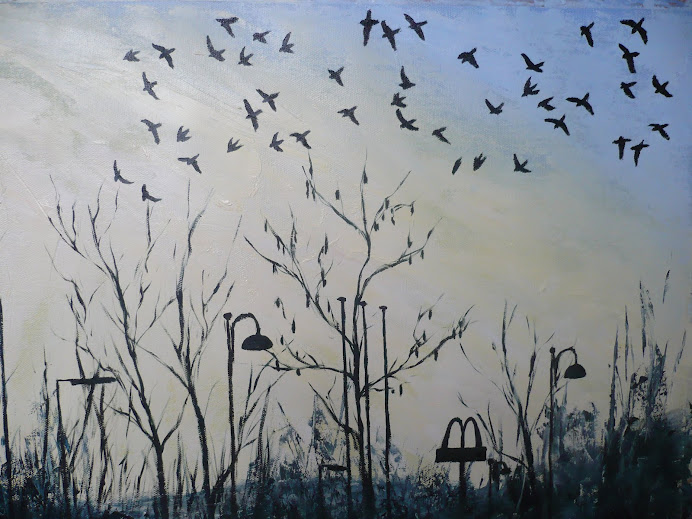I've just finished reading the book "John Piper, Myfanwy Piper, Lives in Art" by Frances Spalding, copyright 2009. I really enjoyed reading it because it flowed like a novel and it was easy to get caught up in the lives of these fascinating people and their family and home whilst also being absorbed with the creative contents of their lives. I want to include some of the passages that interested me in particular.
Page 18 of the book includes a wonderful quote by William Blake, whose work Piper admired tremendously because of its"exuberant creativity." Upon reading the work of this artist he came across this question posed by Blake and the impact of it was obviously felt throughout the whole of Piper's creative life; "Shall painting be confined to the sordid drudgery of facsimile representations of merely mortal and perishing substances and not be, as poetry and music are, elevated to its own proper sphere of invention and visionary conception?" This is a very powerful suggestion that I can see settled into Pipers brain at an early age, he would have been about seventeen at the time, and helped to form the way that he used his art, as he very thankfully did not go down the route of facsimile representation in his art. The whole of his career was fascinating to read about, flowing from pure abstraction to a Romanticised vision of the country and its buildings (fueled by the destruction of buildings, villages, towns and cities by the Second World War) which he created in oils, watercolours, aquatints, lithographs and prints, through to stained glass windows, murals and tapestries.
Descriptions of his time spent in Wales were particularly interesting to me, visiting areas such as Pembrokeshire, Cardiganshire and the Teifi lakes where he enjoyed the "weird solitude". His trips to North Wales during 1945 also produced rich and dramatic paintings, reminiscent of the layers grazes used by Turner, though enhanced with textures and added depth through his interesting use of thick gesso which he used to "complicate and enrich the surface of the painting."(p.288) Other parts of the book also used more details of his working method, involving the thick layers of gesso and thin glazes of oil paints as underpainting and scraping back, ideas which helped to inform the way I painted my own version of a ruined building. He was always aware of the painting serving the need for being a representation of something seen whilst also existing as a painting in its own right, and the process of experimenting and marking the surface of the painting in a way which shows it as an object, and not just an illusion of something, is something that was very important to him. He always drew on the spot with mixed media, including pencils, black and coloured inks, pastel and oily chalks, watercolour and gouache and would only use his oils when back in the studio, as the amount of equipment needed was just too much to take on site. Page 216 describes the scratches into the paint, using the wrong end of the brush, as carrying "a memory of the building's imagined past."
Cotman was another of the artists who Piper admired for his choice of ruined buildings and who always found "rich beauties in every building he visited" no matter how decayed they were. Piper was one of the artists who helped to revive this Romanticised view of nature and the countryside as favoured by Turner and other artists of the past. Piper also published his own book on the subject in 1942 called "British Romantic Artists" which opens with the striking line that Romantic art "is the result of a vision that can see into these things something significant
beyond ordinary significance:something that for a moment seems to contain the
whole world; and, when the moment is past, carries over some comment on life or
experience besides the comment on appearances."
Which to my mind harks back to the quote above by William Blake that had struck Piper as a teenager, and goes to show how much of a resonance it must have held for him. Christopher Hussey in his book "The Picturesque," quoted by Frances Spalding, says of the Romantic movement in art that is was a process of "feeling through the eyes" and it was this that fed his imagination to see into and beyond the destruction that he beheld in the ruined Coventry Cathedral, his turning point when it came to dealing with the destruction of the war and the painting that inspired me to take the ideas from it to feed into my painting of a ruined building.
A passage in page 202 made me laugh when Piper was commissioned to paint Windsor Castle and upon seeing the finished images with their dark and brooding storm clouds King George VI made the comment "you seem to have very bad luck with your weather, Mr Piper." However if it hadn't been for this expressive use of landscape then Piper would have just ended up as another typical typographer, not as a Romantic visionary of the British landscape.

No comments:
Post a Comment